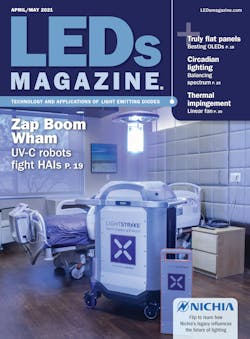Interoperable connected LED lighting remains a pipe dream — for now (MAGAZINE)
There are a lot of reasons connected solid-state lighting (SSL) hasn’t reached the glorious success many predicted. The industry was hijacked a bit with what seemed fantastic new Internet of Things (IoT) applications that turned out to be incredibly difficult to execute on and, more importantly, deliver return on investment (ROI). In fact, we recently changed the name of our connected-lighting newsletter to the Connected SSL & Controls newsletter, omitting IoT in the title. Fantastic IoT concepts may happen, but connected lighting should deliver ROI simply based on additional energy savings beyond what efficient LEDs offer.
So why have networked lighting controls struggled to lift off? There is complexity involved. And we have published articles that illustrate issues with sensors and more. Still, I would argue it’s the lack of interoperability that is the main issue standing in the way of plug-and-play simplicity. The IT industry has a history of epic standards battles that ultimately unleash technologies such as Ethernet or Wi-Fi. The LED and SSL sectors can’t even see, to frame the fight.
Let’s consider some recent stories, including one in this issue, and contemplate where we stand. And I’ll warn upfront. There isn’t a heartwarming, happy conclusion in my near-term crystal ball.
Check out the story about the beautiful city of Terrassa, Spain, and its new municipal outdoor lighting system. The goals of the city frame the challenge better than most. Really good connected lighting and controls need more than just a ubiquitous network such as IT has with Wi-Fi. Terrassa pursued true quality of light with every luminaire supporting the same dimming curve in terms of chromaticity. The solution was to use the same driver family across 30 luminaires from seven vendors. That brute-force approach worked but isn’t ideal.
Even if we capitulate and don’t demand exact light quality and uniformity across a project, the options remain limited. For outdoor projects, the TALQ Consortium enables mixing of islands of different technologies in one overarching network. Read how Stockholm leveraged the TALQ standard. TALQ offers progress but falls short in terms of interoperability on an individual network segment.
The Bluetooth mesh community has made more progress indoors than I foresaw as possible. We recently covered an indoor Bluetooth mesh project covering a 22-story office building with one network — no gateways or servers required. EMC, Silvair, and McWong combined on the project. And additional energy savings beyond LED installation covered the ROI. That’s progress. But the project was based on the use of McWong sensors/controllers throughout and uniformity came based on the fact that the mainly commercial-use office space was served by identical troffers throughout.
I wish I could suggest an easy path forward. I do believe that end users will find far more functionality and energy savings with networked lighting controls than they do with simple room-based controls. Still, we need a standard that covers functionality and a command and data structure for use in a luminaire. Some of that is happening in the DALI Alliance. And the Zigbee Alliance was headed down that path of creating application profiles, but that work was seemingly derailed a bit by Bluetooth, PoE (Power over Ethernet), and other connectivity options. It seems that a standardized data and command structure in the driver that can be mated to different connectivity options is the answer.
Maury Wright
EDITOR

Maury Wright | Editor in Chief
Maury Wright is an electronics engineer turned technology journalist, who has focused specifically on the LED & Lighting industry for the past decade. Wright first wrote for LEDs Magazine as a contractor in 2010, and took over as Editor-in-Chief in 2012. He has broad experience in technology areas ranging from microprocessors to digital media to wireless networks that he gained over 30 years in the trade press. Wright has experience running global editorial operations, such as during his tenure as worldwide editorial director of EDN Magazine, and has been instrumental in launching publication websites going back to the earliest days of the Internet. Wright has won numerous industry awards, including multiple ASBPE national awards for B2B journalism excellence, and has received finalist recognition for LEDs Magazine in the FOLIO Eddie Awards. He received a BS in electrical engineering from Auburn University.






